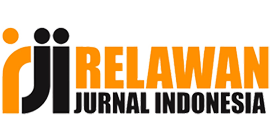Profil Berpikir Reflektif Siswa dalam Menyelesaikan Soal AKM Ditinjau dari Adversity Quotient
DOI:
https://doi.org/10.31539/judika.v8i3.15422Abstract
This study aims to describe the profile of students' reflective thinking in solving AKM problems in terms of adversity quotient level. The method used is qualitative with a descriptive approach with the stages of giving written tests completed with the think-aloud technique, observation of answer sheets, interviews, data reduction, data analysis, data coding, and conclusions. The results showed that: (1) the reflective thinking profile of quitter students in solving AKM problems meets all indicators of the techniques component and one indicator on the conceptualization component, (2) the reflective thinking profile of camper students in solving AKM problems does not meet one indicator on the conceptualization component, namely thinking of other ways to solve problems, (3) the reflective thinking profile of climber students in solving AKM problems meets all components of reflective thinking including techniques, monitoring, insight, and conceptualization. In conclusion, each level of adversity quotient has a different reflective thinking profile according to the criteria of each type.
Keywords: Adversity Quotient, AKM, Reflective Thinking.
References
Agustin, R. L. (2022). Analisis Kemampuan Berpikir Reflektif Peserta Didik dalam Memecahkan Masalah Materi Lingkaran Kelas VIII SMPIT Darussalam Tanon Kabupaten Sragen Ditinjau dari Adversity Quotient [Universitas Sebelas Maret Surakarta]. https://digilib.uns.ac.id/dokumen/detail/87395/
Aisyah, A. S., Riyadi, & Subanti, S. (2021). Description of The Difficultty of Student’s Mathematics Problem Solving Assessed from Adversity Quotient (AQ). AKSIOMA: Jurnal Program Studi Pendidikan Matematika, 10(2), 1161–1170. https://doi.org/https://doi.org/10.24127/ajpm.v10i2.3663
Hidayat, N., Usodo, B., & Saputro, D. R. S. (2020). Reflective Thinking Ability of Junior High School Students of 2 Pleret Viewed from Self-Confidence. International Journal of Multicultural and Multireligious Understanding, 7(8), 117–123. https://doi.org/10.18415/ijmmu.v7i8.1818
Hulaikah, M., Degeng, I. N. S., Sulton, & Muwarni, F. D. (2020). The Effect of Experiential Learning and Adversity Quotient on Problem Solving Ability. International Journal of Instruction, 13(1), 869–884. https://doi.org/10.29333/iji.2020.13156a
Isnaen, N. S. F., & Budiarto, M. T. (2018). Profil Berpikir Reflektif Siswa dalam Memecahkan Masalah Matematika Ditinjau dari Adversity Quotient. Jurnal Ilmiah Pendidikan Matematika, 1(7), 68–73. https://jurnalmahasiswa.unesa.ac.id/index.php/3/article/view/22731
Juwita, H. R., Roemintoyo, & Usodo, B. (2020). The Role of Adversity Quotient in the Field of Education: A Review of the Literature on Educational Development. International Journal of Educational Methodology, 6(3), 507–515. https://doi.org/10.12973/ijem.6.3.507
Kholid, M. N., Sa’dijah, C., Hidayanto, E., & Permadi, H. (2020). How Are Students’ Reflective Thinking for Problem Solving? Journal for the Education of Gifted Young Scientists, 8(3), 1135–1146. https://doi.org/10.17478/JEGYS.688210
Kholid, M. N., Swastika, A., Nirmala, E., & Maharani, S. (2021). Pupils’ Reflective Thinking and Self-Efficacy Level for Problem Solving. Turkish Journal of Computer and Mathematics Education, 12(6), 4628–4636. https://doi.org/https://doi.org/10.17762/turcomat.v12i6.8448
Kholid, M. N., Telasih, S., Pradana, L. N., & Maharani, S. (2021). Reflective Thinking of Mathematics Prospective Teachers’ for Problem Solving. Journal of Physics: Conference Series, 1783(012102), 1–6. https://doi.org/10.1088/1742-6596/1783/1/012102
Khumairoh, B., Maghfirotun Amin, S., & Wijayanti, P. (2020). Penalaran Proporsional Siswa Kelas Menengah dalam Menyelesaikan Masalah Matematika Ditinjau dari Adversity Quotient. 9(1), 67–80. https://doi.org/10.21070/pedagogia.v%vi%i.259
Manurung, S. Y., & Listiani, T. (2020). Menjadi Guru yang Reflektif Melalui Proses Berpikir Reflektif dalam Pembelajaran Matematika [Becoming a Reflective Teacher Through the Reflective Thinking Process in Mathematics Learning]. Polyglot: Jurnal Ilmiah, 16(1), 58–83. https://doi.org/10.19166/pji.v16i1.2262
Meriana, T., & Murniarti, E. (2021). Analisis Pelatihan Asesmen Kompetensi Munimum. Dinamika Pendidikan, 14(2), 110–116. https://doi.org/https://doi.org/10.51212/jdp.v14i2.7
Nur, A. S., Kartono, Zaenuri, & Rochmad. (2022). The Lateral Thinking Processes in Solving Mathematical Word Problems Reviewed at Adversity Quotient and Reflective Cognitive Style. Infinity Journal, 11(2), 223–236. https://doi.org/10.22460/infinity.v11i2.p223-236
Orakc, Ş. (2021). Exploring The Relationships Between Cognitive Flexibility, Learner Autonomy, and Reflective Thinking. Thinking Skills and Creativity, 41, 1–13. https://doi.org/10.1016/j.tsc.2021.100838
Rokhim, D. A., Rahayu, B. N., Alfiah, L. N., Peni, R., Wahyudi, B., Wahyudi, A., Widarti, H. R., & Malang, U. N. (2021). Analisis Kesiapan Peserta Didik dan Guru pada Asesmen Nasional (Asesmen Kompetensi Minimum, Survey Karakter, dan Survey Lingkungan Belajar). Jurnal Administrasi Dan Pendidikan Manajemen, 4(1), 61–71. http://journal2.um.ac.id/index.php/jamp/
Saraswati, P. M. S., & Agustika, G. N. S. (2020). Kemampuan Berpikir Tingkat Tinggi dalam Menyelesaikan Soal HOTS Mata Pelajaran Matematika. Jurnal Ilmiah Sekolah Dasar, 4(2), 257–269. https://doi.org/https://doi.org/10.23887/jisd.v4i2.25336
Sumardi, & Tyas, A. C. (2022). Reflective Thinking Profile of High School Students in Solving Hots-Type Questions Reviewed from Adversity Quotient. JTAM (Jurnal Teori Dan Aplikasi Matematika), 6(4), 905. https://doi.org/10.31764/jtam.v6i4.9376
Trisnaningtyas, N. O., & Khotimah, R. P. (2022). Analisis Kemampuan Literasi Matematis dalam Menyelesaikan Soal AKM Ditinjau Dara Gaya Belajar. AKSIOMA: Jurnal Program Studi Pendidikan Matematika, 11(4), 2714–2724. https://doi.org/10.24127/ajpm.v11i4.5662
Zakaria, N., & Mtetwa, D. K. J. (2022). Student Teachers’ Conceptualizations of Mathematical Problem Solving and The nature of Their Warrants. JRAMathEdu (Journal of Research and Advances in Mathematics Education), 7(4), 253–272. https://doi.org/10.23917/jramathedu.v7i4.15303
Downloads
Published
Issue
Section
License
Copyright (c) 2025 Asti Melina Daniati, Rita Pramujiyanti Khotimah

This work is licensed under a Creative Commons Attribution-NonCommercial 4.0 International License.


